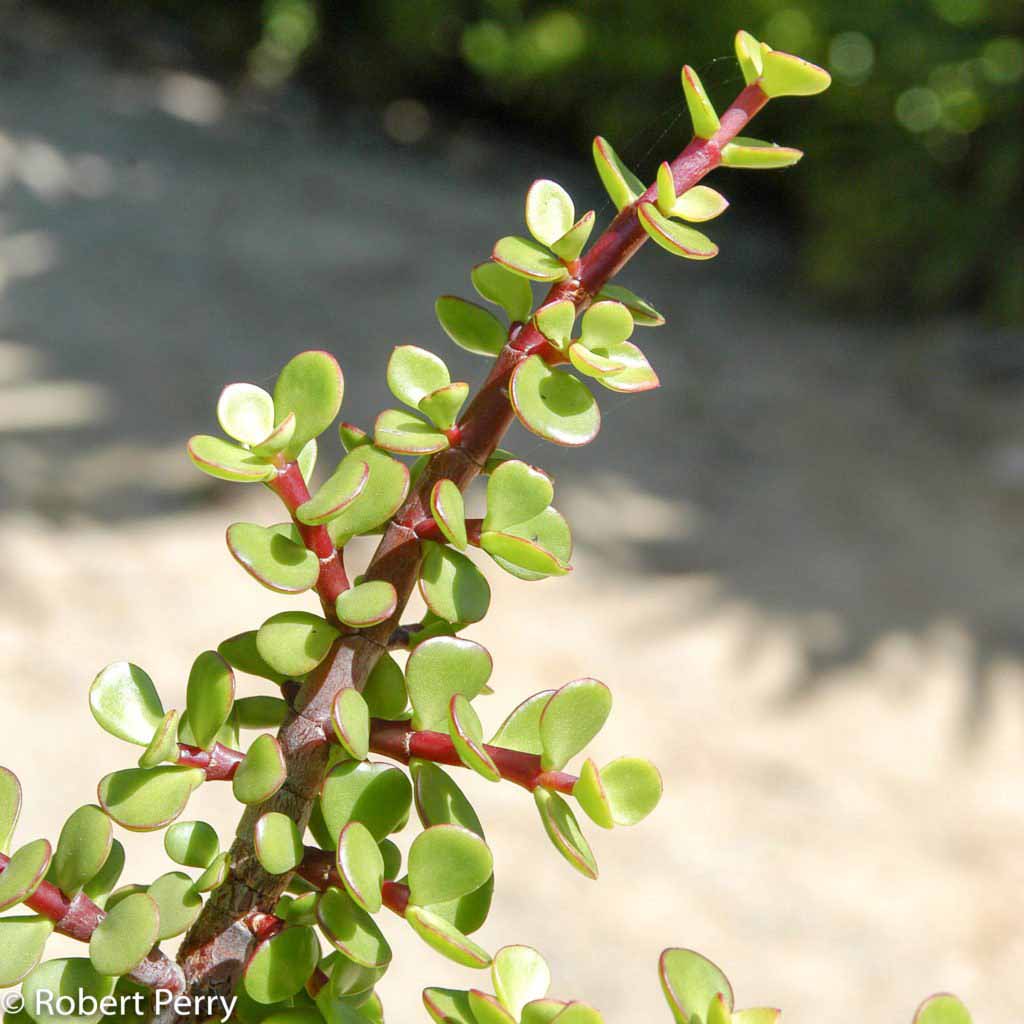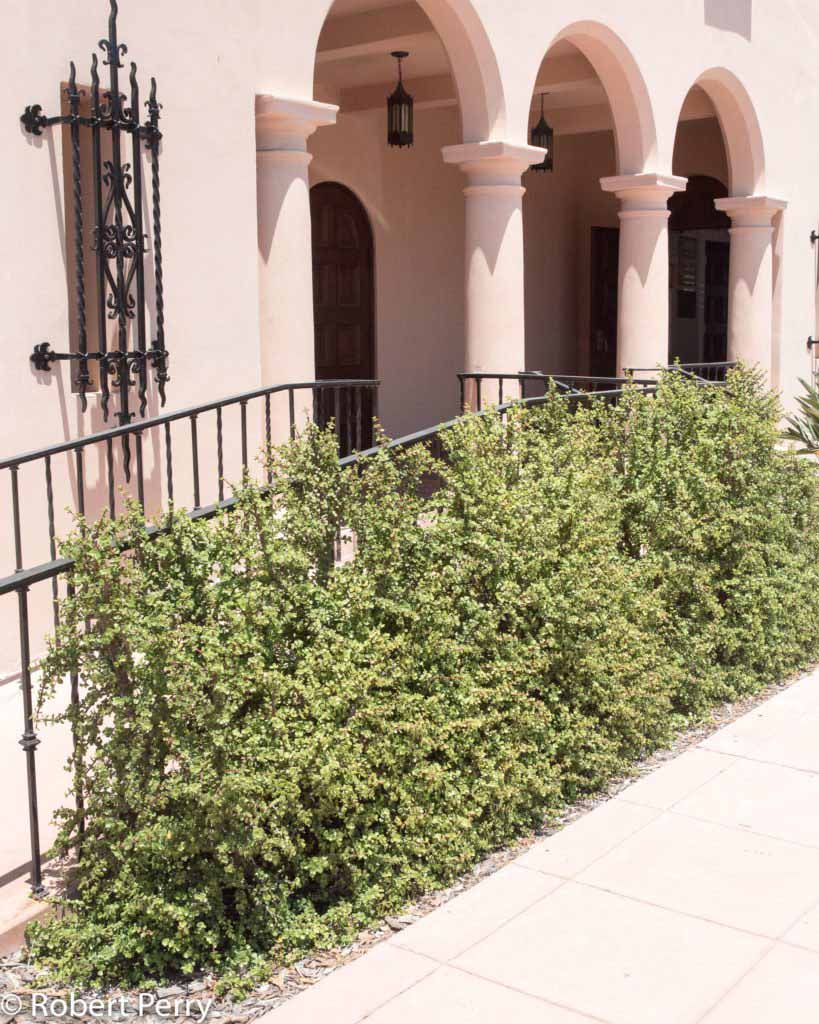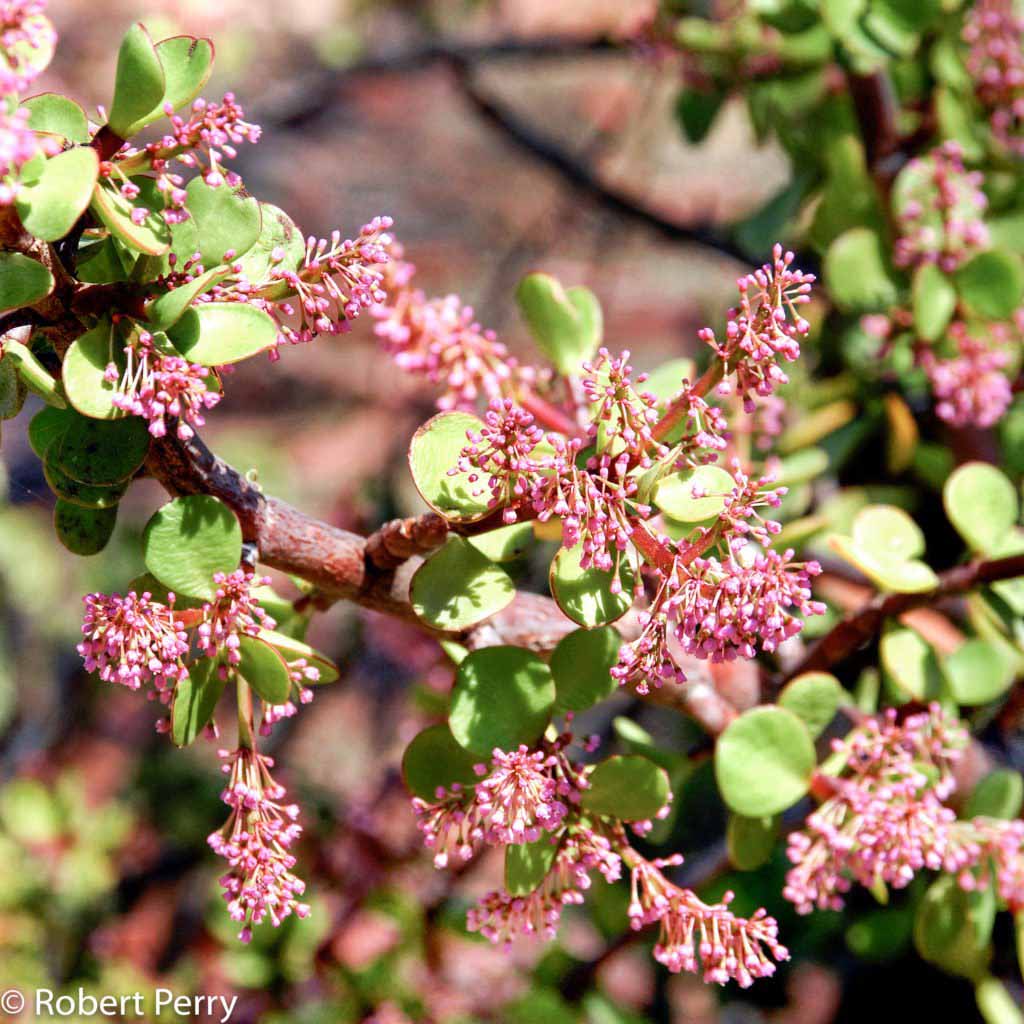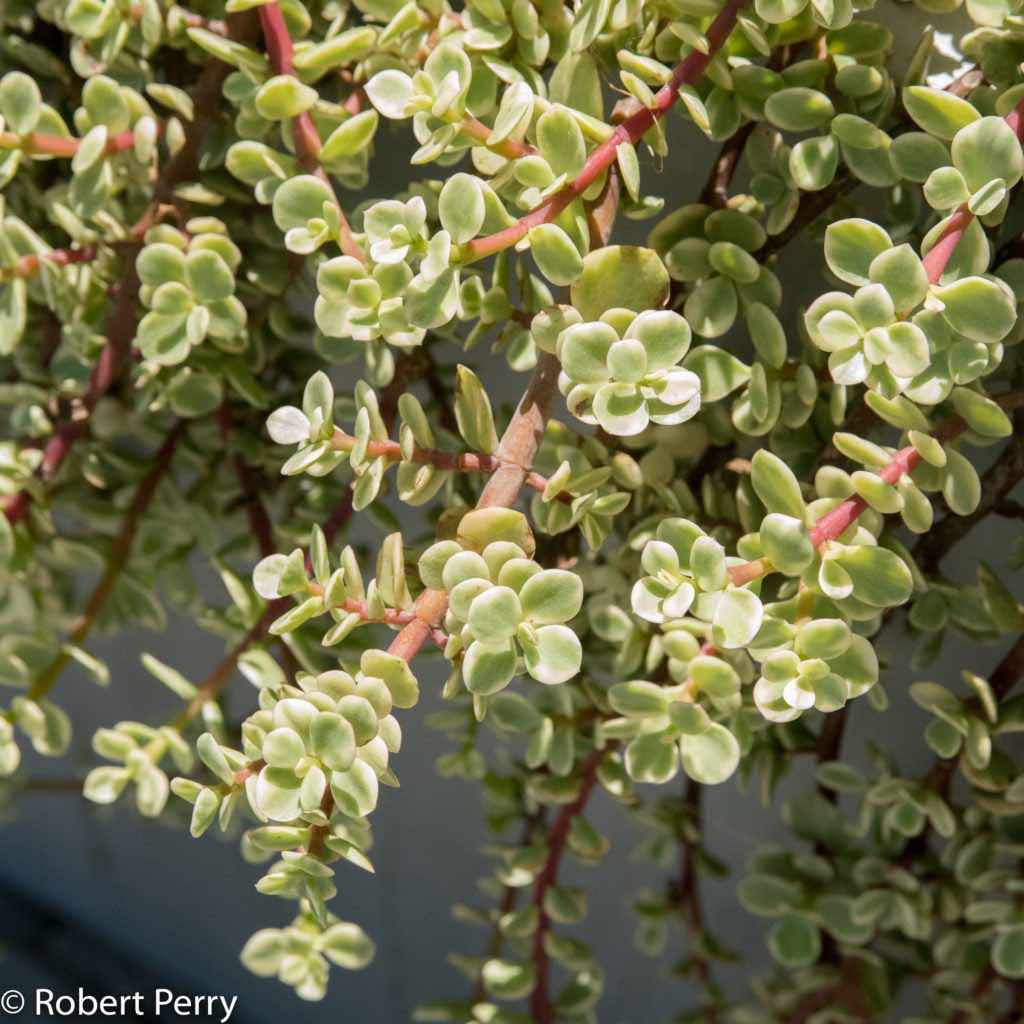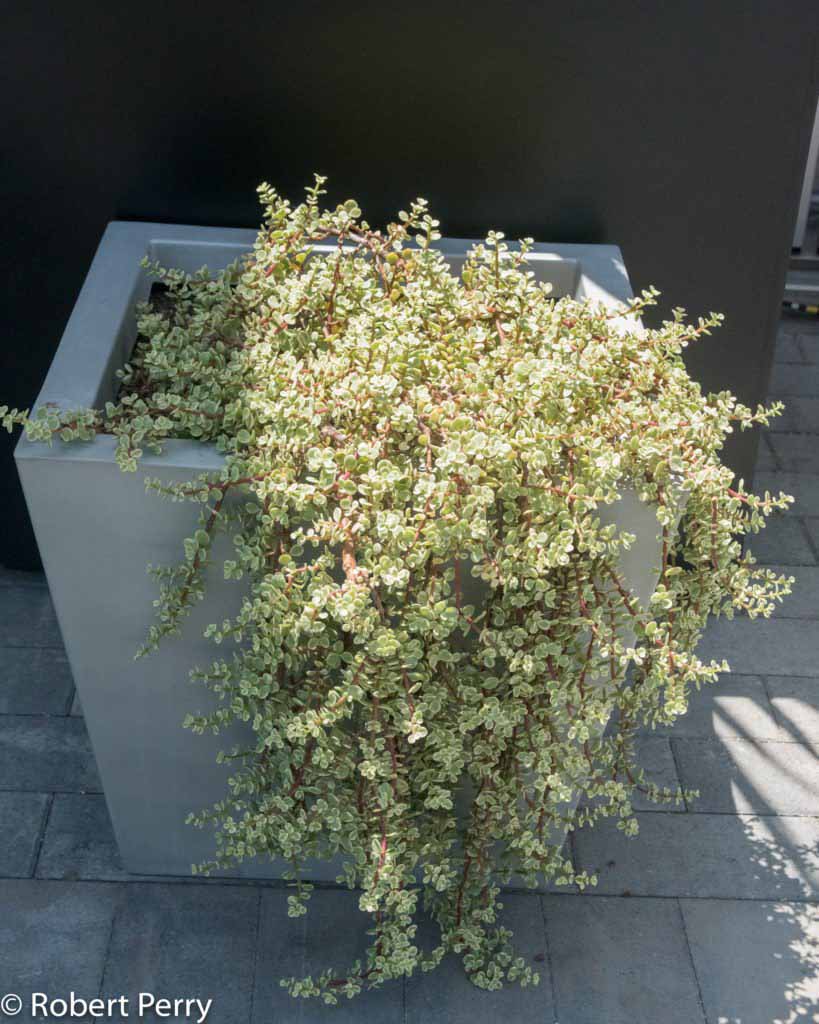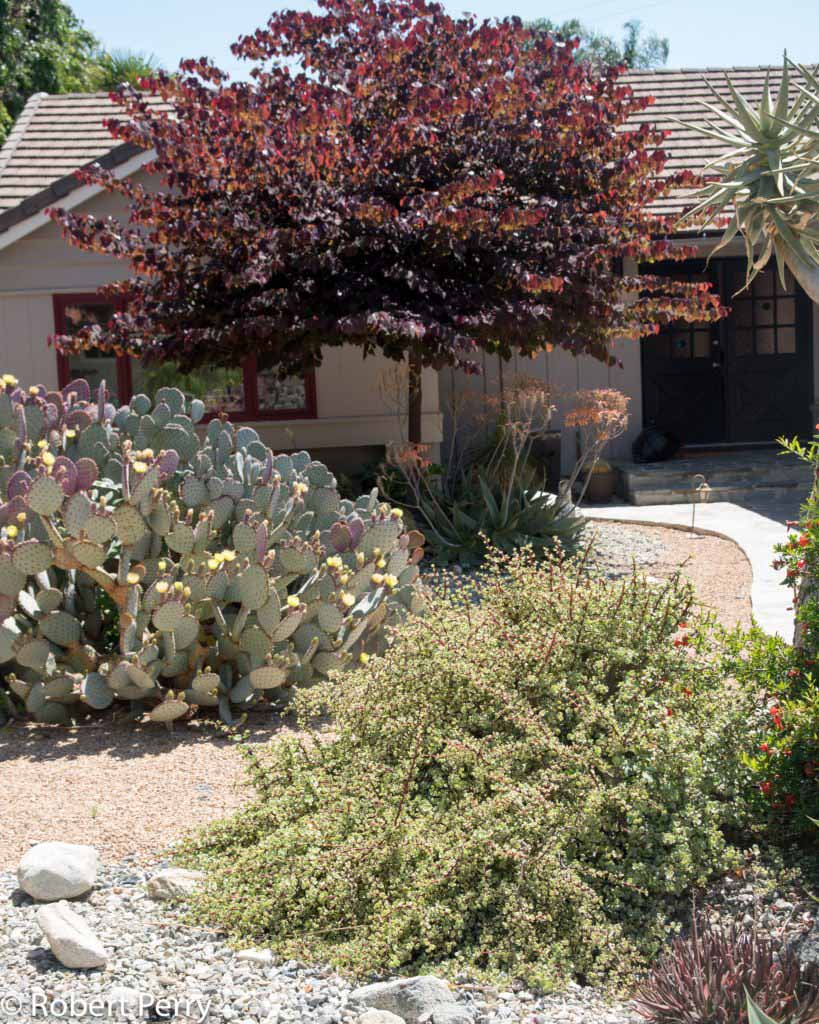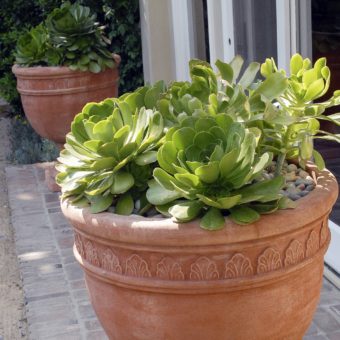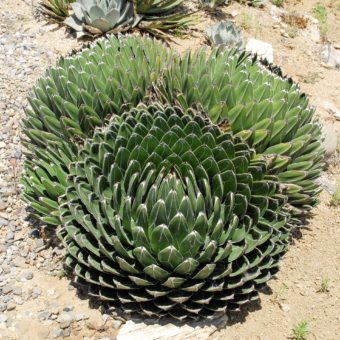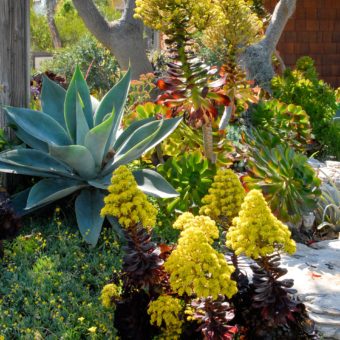Elephant food is a unique and colorful upright succulent slowly growing 6-8 ft. tall and as wide. Stems and trunks are thick, flexible and deep purple in color. Leaves are medium green, nearly round and occur in pairs on opposite sides of stems; clusters of attractive tiny purple flowers occur in summer.
Elephant food is native to dry climate zones across coastal and inland parts of South Africa and is the only plant within the genus Portulacaria. And, as the common name suggests, it is a popular food of elephants and other range animals. It is well adapted to heat, sun and drought, but is sensitive to heavy frost. In Inland Empire gardens, this plant is commonly used in containers and rock gardens. One cultivar, P. a. ‘Variegata’, grows with a spreading habit that allows it to spill over the edges of containers and low walls.
